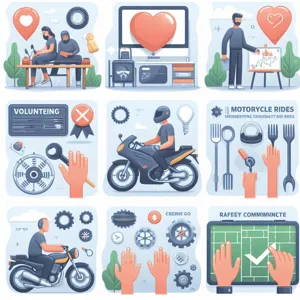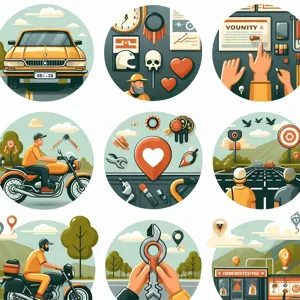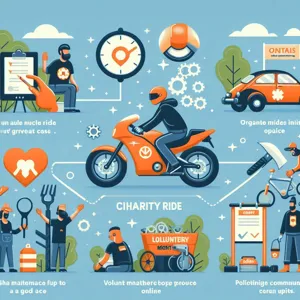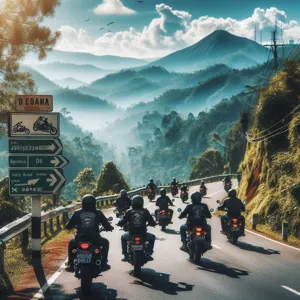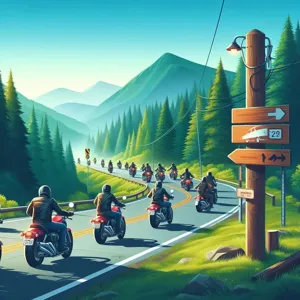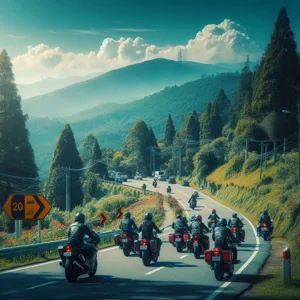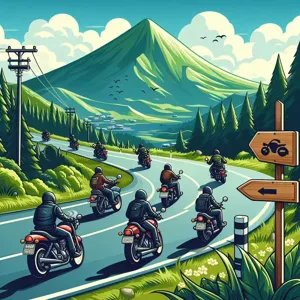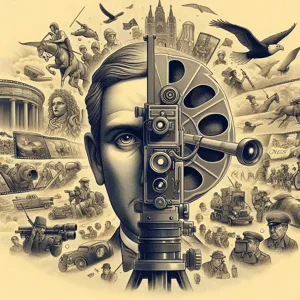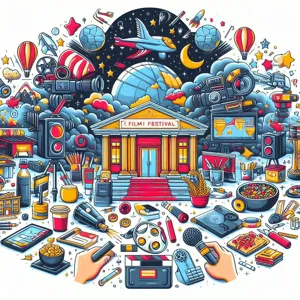The universe is a vast and enigmatic expanse, filled with mysteries that challenge our understanding of physics and the fundamental forces that govern it.
Among these cosmic phenomena, gravitational waves stand out as ripples in the fabric of spacetime, carrying with them the echoes of some of the universe’s most cataclysmic events. First predicted by Albert Einstein over a century ago, these elusive waves were finally detected in 2015, opening a new window into the cosmos and revolutionizing our approach to astrophysics. In this post, we will embark on an exciting journey to explore the different types of gravitational waves, from those generated by colliding black holes to the subtle fluctuations caused by supernovae. By understanding the origins and characteristics of these waves, we can gain deeper insights into the workings of the universe, enhance our knowledge of fundamental physics, and uncover the stories hidden within the cosmos. Join us as we delve into the fascinating world of gravitational waves and their significance in our quest to understand the universe.
1. Introduction to Gravitational Waves

Gravitational waves are one of the most fascinating phenomena in the universe, serving as ripples in the fabric of spacetime itself. Predicted by Albert Einstein in 1916 as a consequence of his General Theory of Relativity, these waves are generated by some of the cosmos’ most violent and energetic events, such as the collision of black holes or the merger of neutron stars. Just as a stone dropped into a calm pond creates ripples that propagate outward, gravitational waves ripple out from their source, carrying with them invaluable information about the processes that created them.
The notion of gravitational waves was largely theoretical for nearly a century, primarily existing in the realm of advanced physics and complex mathematical equations. It wasn’t until 2015 that the Laser Interferometer Gravitational-Wave Observatory (LIGO) made history by directly detecting these elusive waves, marking a monumental milestone in astrophysics and opening a new window into the universe. This groundbreaking discovery not only confirmed Einstein’s predictions but also provided scientists with a revolutionary tool for observing the cosmos—one that transcends the limitations of traditional electromagnetic observations, such as light.
Gravitational waves provide insights into phenomena that are often invisible to conventional telescopes, allowing researchers to study the most extreme conditions in the universe, including the birth of black holes and the remnants of supernovae. As we delve deeper into the universe’s secrets, understanding the different types and sources of gravitational waves will enhance our grasp of fundamental physics, offering a glimpse into the intricate workings of the cosmos and the very nature of space and time. In this exploration, we’ll examine the various types of gravitational waves and their significance, shedding light on what these cosmic ripples reveal about our universe.
2. The Science Behind Gravitational Waves
Gravitational waves are ripples in the fabric of spacetime caused by some of the universe’s most violent and energetic processes. To grasp the essence of these cosmic phenomena, we must first delve into the fundamentals of Einstein’s General Theory of Relativity, which posits that massive objects warp the spacetime around them. Just as a heavy ball placed on a stretched rubber sheet creates a depression, so too do massive celestial bodies like black holes and neutron stars create distortions in spacetime.
When these massive objects accelerate—such as during the collision of two black holes or the merger of neutron stars—they generate waves that propagate outward at the speed of light. Imagine throwing a stone into a still pond; the ripples that spread out from the point of impact are akin to gravitational waves emanating from a cataclysmic event in space. As these waves travel across the universe, they carry with them valuable information about their origins, allowing scientists to peer into the heart of some of the most enigmatic events in the cosmos.
Detecting these faint ripples requires highly sensitive instruments like LIGO (Laser Interferometer Gravitational-Wave Observatory) and Virgo. These observatories utilize laser beams to measure minute changes in distance caused by passing gravitational waves, which are often smaller than the diameter of a proton. The sheer precision required to detect these shifts underscores the level of sophistication and innovation in modern astrophysics.
Understanding the science behind gravitational waves not only enhances our comprehension of the universe but also opens a new window into the study of phenomena that were previously beyond our reach. Each detection serves as a remarkable reminder of the intricate dance of celestial bodies and the profound mysteries that lie within the cosmos, inviting us to explore further and discover what other secrets the universe may hold.
3. The History of Gravitational Wave Detection

The journey to understanding gravitational waves is a fascinating narrative that intertwines the realms of theoretical physics and astronomical discovery. It all began with Albert Einstein’s General Theory of Relativity, published in 1915, which proposed that massive objects warp the fabric of spacetime, creating ripples that travel across the universe. However, it wasn’t until nearly a century later that these ripples were confirmed.
The quest for gravitational waves gained momentum in the 1960s when physicists like Joseph Weber conducted some of the first experiments to detect them. Weber constructed large aluminum cylinders that he believed would resonate with passing gravitational waves, but his results were met with skepticism and faced significant challenges in reproducibility. This initial foray paved the way for more refined techniques and technologies that would eventually lead to successful detection.
In the late 20th century, the vision for a more sophisticated detection mechanism took shape with the proposal of laser interferometry. This technology aimed to measure incredibly tiny changes in distance caused by gravitational waves. The Laser Interferometer Gravitational-Wave Observatory (LIGO) was established in the late 1990s, marking a significant advancement in the field. After decades of engineering challenges, data analysis, and countless hours of observations, LIGO made history on September 14, 2015, when it detected its first gravitational wave signal—an event caused by the merger of two black holes located approximately 1.3 billion light-years away.
This groundbreaking discovery was not just a triumph for LIGO but a pivotal moment for astrophysics as a whole. It opened a new window into the universe, allowing scientists to observe cosmic events that were previously invisible to traditional telescopes. The detection of gravitational waves has since led to a slew of new findings, including the observation of neutron star collisions and the confirmation of various predictions made by Einstein’s theory.
As we continue to refine our detection methods and expand our observational capabilities, the history of gravitational wave detection stands as a testament to human curiosity and ingenuity, laying the groundwork for future explorations of the cosmos and the enigmatic phenomena that it holds.
4. Types of Gravitational Waves: An Overview
Gravitational waves, the ripples in spacetime generated by some of the universe’s most violent and energetic processes, come in various types, each providing unique insights into the cosmos. Understanding these types not only enhances our grasp of the fundamental physics underlying the universe but also illuminates the extraordinary events that create them.
**1. Stellar-Mass Gravitational Waves**
These waves are produced by the collision or merger of compact objects, primarily black holes and neutron stars. As two black holes spiral toward one another, they emit gravitational waves that carry information about their masses, spins, and the dynamics of their intricate dance. The detection of these waves, such as those observed by the LIGO and Virgo observatories, has opened a new window into the study of black hole mergers and the extreme conditions present in such scenarios.
**2. Supermassive Black Hole Gravitational Waves**
On a larger scale, gravitational waves can be generated by the mergers of supermassive black holes, typically found at the centers of galaxies. These events are much rarer and occur over longer timescales, but their detection could provide crucial insights into the growth and evolution of galaxies. The gravitational waves from these mergers might reveal the history of cosmic structures and the interplay of gravity on a grand scale.
**3. Stochastic Gravitational Waves**
Unlike the sharp signals from individual events, stochastic gravitational waves represent a background hum generated by countless unresolved sources throughout the universe. This noise is the cumulative effect of numerous events, including the early universe’s inflationary phase, cosmic strings, and the mergers of countless stellar remnants over cosmic time. Detecting this background could yield information about the universe’s earliest moments and the formation of its large-scale structures.
**4. Continuous Gravitational Waves**
Continuous waves are a result of non-axisymmetric rotating neutron stars, also known as pulsars, which emit a steady stream of gravitational waves as they spin. These waves can provide insights into the internal structure of neutron stars, their rotation rates, and the physics of matter under extreme conditions. Monitoring these waves can help physicists understand the dynamics of pulsars and their evolution over time.
By categorizing gravitational waves into these distinct types, scientists can better target their observations and develop a deeper understanding of not just gravitational waves themselves, but also the celestial phenomena that create them. Each type serves as a cosmic messenger, revealing the secrets of the universe and enhancing our comprehension of the grand tapestry of existence. As technology advances and detection methods improve, we can expect these waves to continue to unveil the mysteries of the cosmos, one ripple at a time.
5. Stellar-Mass Gravitational Waves
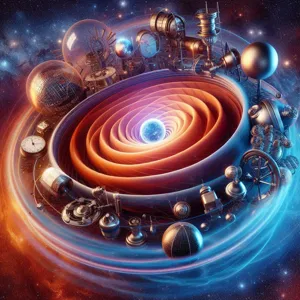
Stellar-mass gravitational waves represent a fascinating and dynamic aspect of astrophysics, stemming from some of the universe’s most dramatic events. These waves are produced by the cataclysmic collisions and mergers of stellar objects, particularly black holes and neutron stars, which occur in our galactic neighborhood. When two massive stars in close orbit around each other spiral inward, they eventually collide, producing ripples in spacetime that can be detected across vast distances.
The strength of stellar-mass gravitational waves is primarily influenced by the masses of the objects involved and the energy released during these extraordinary events. For instance, when two black holes merge, they can emit gravitational waves with frequencies ranging from tens to thousands of hertz, corresponding to the last moments of their orbital dance. These waves carry information about the properties of their progenitors, such as mass, spin, and distance, enabling astronomers to glean insights into the nature of these enigmatic stellar remnants.
The detection of stellar-mass gravitational waves has opened a new window into the universe, allowing scientists to observe phenomena that were previously hidden from view. The first observation of such waves, made by the Laser Interferometer Gravitational-Wave Observatory (LIGO) in 2015, marked a groundbreaking achievement in the field of astrophysics. It confirmed the existence of binary black hole systems and provided a new method of studying the cosmos, complementing traditional electromagnetic observations.
As technology advances and more sophisticated detectors like LIGO and Virgo continue their work, we can expect an influx of data on stellar-mass gravitational waves. This will not only deepen our understanding of black hole and neutron star formation but also shed light on the fundamental laws of physics governing the universe. With each detection, we edge closer to unraveling the mysteries of our cosmic surroundings, exploring the very fabric of spacetime itself.
6. Supermassive Black Hole Gravitational Waves
Supermassive black hole gravitational waves represent one of the most intriguing phenomena in astrophysics, offering profound insights into the nature of the universe. These waves are generated during events involving supermassive black holes, typically found at the centers of galaxies, which can be millions to billions of times more massive than our Sun. When two supermassive black holes merge, they create ripples in the fabric of spacetime that travel across the cosmos at the speed of light.
The detection of these waves is a monumental task, requiring incredibly sensitive instruments, such as the Laser Interferometer Gravitational-Wave Observatory (LIGO) and the Virgo interferometer. When a merger occurs, the gravitational waves produced are not only powerful but also carry information about the masses and spins of the black holes involved, as well as the dynamics of the merger itself. The frequency and amplitude of these waves can vary significantly, often falling into the low-frequency range, which is particularly challenging to observe.
Understanding supermassive black hole gravitational waves not only enhances our knowledge of black hole physics but also sheds light on the evolution of galaxies and the structure of the universe. Their study can reveal the frequency of black hole mergers across cosmic time, helping astronomers paint a clearer picture of how galaxies have interacted and evolved over billions of years.
As research continues, these gravitational waves are expected to unlock even more secrets, opening up a new frontier in our quest to understand the cosmos. With future observatories planned to come online, such as the space-based LISA (Laser Interferometer Space Antenna), we are on the brink of potentially groundbreaking discoveries that may redefine our understanding of the universe and our place within it.
7. Cosmic Events: Mergers and Collisions

Cosmic events, particularly mergers and collisions, are the dramatic powerhouses of gravitational waves. These astronomical spectacles unfold when massive celestial bodies, such as black holes or neutron stars, come together in a cataclysmic dance, resulting in ripples that propagate through the fabric of spacetime. Imagine two black holes, each with a mass several times that of our Sun, spiraling toward one another in a cosmic ballet. As they draw closer, their gravitational fields intensify, distorting the space around them and releasing an incredible amount of energy in the form of gravitational waves.
When these titanic entities finally collide, they unleash an explosion of gravitational waves that can be detected light-years away. This is akin to a cosmic symphony, with the merging black holes creating a crescendo of waves that resonate across the universe. Scientists have likened the sound of these waves to a chirp, a brief but powerful signal that holds the key to understanding the nature of gravity and the fundamental workings of the cosmos.
Neutron star mergers, on the other hand, produce not only gravitational waves but also electromagnetic signals, such as gamma-ray bursts, that provide a multi-faceted view of these events. The collision of neutron stars can create heavy elements like gold and platinum, shedding light on the origins of these precious metals in our universe. Observing these cosmic events through both gravitational waves and electromagnetic radiation allows astronomers to piece together the intricate puzzle of stellar evolution and the dynamics of extreme environments.
As our detection technologies improve, we find ourselves on the cusp of a new era in astronomical research. Each merger and collision serves as a reminder of the universe’s dynamic nature, opening a window into phenomena that were once beyond our grasp. By studying these cosmic events, we not only deepen our understanding of gravitational waves but also gain insight into the universe’s most profound mysteries.
8. The Role of LIGO in Gravitational Wave Astronomy
The Laser Interferometer Gravitational-Wave Observatory (LIGO) has revolutionized our understanding of the universe by providing the first direct evidence of gravitational waves, a phenomenon predicted by Einstein’s General Theory of Relativity over a century ago. Established in the early 2000s, LIGO consists of two large observatories located in Livingston, Louisiana, and Hanford, Washington, which work in tandem to detect the minuscule ripples in spacetime produced by cataclysmic cosmic events.
LIGO operates using a technique known as laser interferometry. Each observatory features two long, perpendicular arms, each extending over four kilometers. When a gravitational wave passes through Earth, it distorts spacetime, causing one arm to lengthen while the other shortens, albeit by a fraction of the diameter of a proton. This incredibly subtle change is detected by the interference pattern of laser beams bouncing between mirrors at the ends of the arms, allowing scientists to measure these minuscule shifts with unprecedented precision.
The first successful detection of gravitational waves by LIGO in September 2015 marked a monumental milestone in astrophysics. This event, designated GW150914, was produced by the merger of two black holes approximately 1.3 billion light-years away. The discovery not only confirmed a key prediction of general relativity but also opened a new window into the universe, allowing astronomers to observe phenomena that were previously invisible to traditional electromagnetic telescopes.
In the years since its initial detection, LIGO has continued to unveil the mysteries of the cosmos, observing numerous gravitational wave events, including neutron star collisions and additional black hole mergers. Each of these discoveries sheds light on the formation and evolution of celestial bodies, further enriching our understanding of the universe’s fundamental workings. As LIGO evolves and expands its capabilities, its role in gravitational wave astronomy promises to deepen our comprehension of events that shape the cosmos and challenge the very fabric of our understanding of physics.
9. Understanding the Frequency and Amplitude of Gravitational Waves
Understanding the frequency and amplitude of gravitational waves is crucial for deciphering the cosmic symphony that these ripples in spacetime create. Gravitational waves are produced by some of the most violent and energetic processes in the universe, such as the collision of black holes or neutron stars. These events generate waves that travel across the cosmos, and their characteristics provide us with invaluable information about their sources.
**Frequency**, in the context of gravitational waves, refers to how often the waves oscillate as they propagate through space. Just as sound waves manifest different pitches based on their frequency, gravitational waves exhibit unique frequencies that can indicate the nature of their origins. For instance, low-frequency waves, typically generated by massive cosmic events like the merger of supermassive black holes, can have frequencies in the range of microhertz to millihertz. In contrast, high-frequency waves, which might arise from lighter objects, such as neutron star collisions, can reach frequencies in the kilohertz range. Understanding these frequencies allows scientists to pinpoint the type of astronomical event that triggered the waves and to learn more about the dynamics of the objects involved.
**Amplitude**, on the other hand, measures the strength or intensity of the gravitational waves. It represents the displacement caused by the passing waves and is related to the amount of energy released in the cosmic event. Larger amplitudes indicate more powerful events, such as a close encounter between two black holes, which create significant distortions in spacetime. Conversely, smaller amplitudes might come from more distant or less energetic events, making them harder to detect. The ability to measure amplitude not only helps in identifying the energy scale of such cosmic events but also plays a vital role in the calibration of gravitational wave detectors like LIGO and Virgo.
Together, frequency and amplitude act like a cosmic fingerprint, providing a wealth of information about the universe’s most enigmatic phenomena. As we continue to enhance our observational capabilities and deepen our understanding of gravitational waves, we unlock the potential to peer into the universe’s most profound mysteries, revealing the dynamic interplay of celestial bodies and the fundamental nature of gravity itself. Through this exploration, we become not just passive observers but active participants in a grand cosmic narrative that spans billions of years.
10. The Impact of Gravitational Waves on Our Understanding of the Universe
Gravitational waves, ripples in the fabric of spacetime caused by some of the most cataclysmic events in the cosmos, have revolutionized our understanding of the universe in profound ways. First predicted by Albert Einstein over a century ago, their eventual detection has opened a new frontier in astrophysics, allowing scientists to observe phenomena that were previously beyond our reach.
The impact of these waves extends far beyond mere detection; they provide a unique lens through which we can study the most extreme environments in the universe. For instance, the merging of black holes—events that produce gravitational waves—offers insights not only into the behavior of these enigmatic objects but also into their formation and evolution. Observing these mergers helps astrophysicists refine their models of stellar evolution and understand the life cycles of stars.
Moreover, gravitational waves complement traditional electromagnetic observations, such as light or radio waves. This multi-messenger approach allows for a more comprehensive understanding of events like neutron star collisions, which emit both gravitational waves and electromagnetic radiation, providing a rich tapestry of data. Such events have illuminated the origins of heavy elements like gold and platinum, linking cosmic events to the very materials that make up our world.
As we continue to develop advanced detectors and improve our sensitivity to these elusive waves, we are poised to uncover deeper mysteries of the universe. The potential to detect waves from the early universe, for example, could shed light on phenomena like inflation—a rapid expansion after the Big Bang. Each detection brings us closer to answering fundamental questions about the nature of spacetime, the life cycle of stars, and the very fabric of reality itself.
In essence, the impact of gravitational waves on our understanding of the universe is nothing short of transformative. They challenge our perceptions, enrich our knowledge, and inspire curiosity about the cosmos that surrounds us. As we forge ahead into this exciting era of discovery, one thing is certain: the universe has much more to reveal, and gravitational waves are the key to unlocking its secrets.
11. Future Prospects: Upcoming Gravitational Wave Observatories
The field of gravitational wave astronomy is on the brink of exciting advancements, with several upcoming observatories set to revolutionize our understanding of the universe. As we continue to refine our detection methods and enhance our observational technologies, the next generation of gravitational wave observatories promises to uncover cosmic phenomena that have long eluded our grasp.
One of the most anticipated projects is the Laser Interferometer Space Antenna (LISA), a pioneering space-based observatory scheduled for launch in the early 2030s. Unlike its ground-based counterparts, LISA will utilize three spacecraft arranged in a triangular formation millions of kilometers apart, allowing it to detect low-frequency gravitational waves generated by massive astronomical events, such as merging supermassive black holes and neutron star collisions. This unique vantage point in space will minimize interference from Earth’s atmosphere and seismic activity, significantly improving our ability to capture elusive signals.
In addition to LISA, the next round of upgrades to existing ground-based facilities, such as the Advanced LIGO and Virgo, will enhance their sensitivity even further. These upgrades aim to expand the detection range and frequency range of gravitational waves, enabling astronomers to observe more distant and varied events. The upcoming Cosmic Explorer, which is still in the conceptual phase, is another ambitious project that could offer an even greater increase in sensitivity by employing longer interferometers, potentially opening new windows into the early universe and dark matter.
Moreover, international collaboration is key to the future of gravitational wave detection. The KAGRA observatory in Japan, with its underground location designed to reduce noise interference, will join the global network of detectors, providing valuable data and enabling multi-messenger astronomy. When combined with electromagnetic observations and neutrino detections, the insights gained will create a more comprehensive picture of cosmic events.
As these new observatories come online, we can expect a surge of groundbreaking discoveries that will not only deepen our understanding of gravitational waves but also reshape our knowledge of the cosmos itself. The universe is vast and full of mysteries, and with these advancements, we are poised to uncover secrets that have been hidden for eons, driving humanity’s quest for knowledge ever forward.
12. Gravitational Waves and Multi-Messenger Astronomy
Gravitational waves, first predicted by Albert Einstein in 1916 as part of his General Theory of Relativity, have opened a new frontier in the field of astrophysics, particularly in the realm of multi-messenger astronomy. This innovative approach combines various types of astronomical signals—gravitational waves, electromagnetic radiation (such as light), and neutrinos—to create a more comprehensive understanding of cosmic events.
When two massive objects, like black holes or neutron stars, collide or merge, they produce ripples in spacetime that propagate outward as gravitational waves. Detecting these waves, as accomplished by observatories like LIGO and Virgo, is only part of the story. The real magic happens when these gravitational signals are paired with other observational data. For instance, if a gravitational wave event is detected, astronomers can then turn their telescopes to the same area of the sky to observe any accompanying electromagnetic signals, such as gamma-ray bursts or visible light emitted during the cataclysmic event.
The landmark event of August 17, 2017, marked the dawn of multi-messenger astronomy when LIGO detected gravitational waves from a neutron star merger, followed by a flurry of observations across the electromagnetic spectrum. This event not only confirmed theories about the origins of heavy elements like gold and platinum but also showcased the potential of combining different forms of cosmic messages to unveil the mysteries of the universe.
Through multi-messenger astronomy, scientists are piecing together the puzzle of the cosmos with unprecedented clarity. By correlating gravitational waves with electromagnetic signals, researchers can glean insights into the properties of the merging objects, their environments, and the fundamental forces at play. This holistic approach enriches our understanding of phenomena like supernovae, gamma-ray bursts, and the mysterious nature of dark matter, thus providing a more vibrant and dynamic portrait of our universe.
As technology advances and more gravitational wave events are detected, the potential for multi-messenger astronomy continues to grow. This burgeoning field not only enhances our knowledge of cosmic events but also ignites curiosity about the underlying mechanics that govern the very fabric of space and time. For those eager to explore the cosmos, the interplay of gravitational waves and multi-messenger astronomy is a thrilling frontier that promises to unravel the intricacies of our universe one discovery at a time.
13. Theoretical Implications of Gravitational Waves
Theoretical implications of gravitational waves extend far beyond our current understanding of the universe, opening up new avenues for scientific exploration and philosophical inquiry. Predicted by Albert Einstein’s General Theory of Relativity, gravitational waves are ripples in spacetime caused by the acceleration of massive objects, such as merging black holes or neutron stars. Their detection has not only confirmed a key aspect of Einstein’s theory but has also prompted scientists to rethink fundamental concepts in physics.
One significant implication of gravitational waves is their potential to provide insights into the nature of gravity itself. As researchers analyze the properties of these waves, they can glean valuable information about the strength and behavior of gravitational forces under extreme conditions. This could lead to advancements in our understanding of how gravity operates in scenarios that cannot be replicated on Earth, such as within the cores of black holes or during the violent aftermath of supernovae.
Moreover, gravitational waves challenge the traditional boundaries of astrophysics and cosmology. They offer a new way to observe the universe, allowing us to detect phenomena that are otherwise invisible to electromagnetic radiation, such as light. This capability not only enhances our understanding of the life cycles of stars and the formation of galaxies but also provides a unique window into the early moments of the universe, potentially shedding light on cosmic events that occurred just after the Big Bang.
The implications of this research extend into the realm of quantum mechanics as well. The intersection of gravitational waves and quantum phenomena raises intriguing questions about the fabric of spacetime and the nature of reality itself. As scientists continue to explore these connections, they may uncover new theories that could unify general relativity and quantum mechanics, two pillars of modern physics that have remained largely incompatible.
In essence, the theoretical implications of gravitational waves are vast and multifaceted. They challenge existing paradigms, inspire new lines of inquiry, and encourage a deeper exploration of the fundamental laws that govern our universe. As we continue to unravel the mysteries of these cosmic phenomena, we may not only redefine our understanding of gravity but also embark on a transformative journey into the very nature of existence.
14. How Gravitational Waves Change Our Perspective on Space-Time
Gravitational waves, those ripples in the fabric of space-time caused by the acceleration of massive celestial bodies, have revolutionized our understanding of the universe. Before their discovery, our conception of space-time was largely theoretical, rooted in Einstein’s general theory of relativity. However, the detection of these waves has provided a tangible link to the cosmic events that shape our reality, fundamentally altering our perspective on the universe.
When a cataclysmic event occurs—such as the collision of two black holes or the merging of neutron stars—gravitational waves ripple outward at the speed of light, carrying with them crucial information about their origins. This phenomenon allows scientists to observe cosmic events that are otherwise invisible to traditional telescopes. For instance, while electromagnetic waves might reveal the light from a supernova explosion, gravitational waves offer a completely new vantage point, allowing us to “hear” these cataclysmic events as they unfold.
The implications of this are profound. With gravitational waves, we are no longer limited to a single lens of observation; we can now combine gravitational wave astronomy with electromagnetic studies to create a multi-faceted view of the universe. This synergy enhances our understanding of the fundamental forces at play and provides insights into the life cycles of stars, the formation of black holes, and the very fabric of space-time itself.
Moreover, the ability to detect and analyze gravitational waves signals a new era in astrophysics, where we can begin to answer some of the universe’s most pressing questions. What lies beyond the observable universe? How do black holes interact? What are the conditions that lead to the formation of neutron stars? Each wave detected brings us closer to unraveling these mysteries, challenging our preconceived notions of what we know about the cosmos.
In essence, gravitational waves have transformed our perspective on space-time from a static backdrop against which cosmic events unfold, into a dynamic and interconnected tapestry of events that shape the universe. As we continue to refine our ability to detect and analyze these waves, we stand on the cusp of a deeper understanding of the universe, one that could fundamentally change our place within it.
15. Conclusion: The Importance of Gravitational Wave Research
In conclusion, the study of gravitational waves represents a monumental leap in our understanding of the universe. These ripples in spacetime, first predicted by Albert Einstein over a century ago, have opened new frontiers in astrophysics and cosmology. The detection of gravitational waves from colliding black holes and neutron stars has not only confirmed key aspects of Einstein’s General Theory of Relativity but has also provided an unprecedented opportunity to observe celestial events that are invisible to traditional telescopes.
Gravitational wave research is crucial for several reasons. First and foremost, it enhances our comprehension of the fundamental forces that govern the cosmos. By studying these waves, scientists can glean insights into the behavior of massive objects, the nature of dark matter and dark energy, and the intricate dynamics of stellar evolution. Furthermore, gravitational waves serve as a new tool for multi-messenger astronomy, allowing researchers to combine information from gravitational waves with electromagnetic signals, such as gamma-ray bursts, to paint a more comprehensive picture of cosmic events.
The implications of this research extend beyond theoretical physics; they touch on our human desire to explore and understand the universe. As we continue to detect and analyze these elusive waves, we are not only probing the depths of space but also engaging in a profound quest for knowledge that inspires future generations. Gravitational wave astronomy is still in its infancy, and as technology advances and detection capabilities improve, we can anticipate remarkable discoveries that will reshape our understanding of the universe and our place within it.
In essence, the importance of gravitational wave research lies not just in the data we gather, but in the profound questions it raises about the nature of reality and the cosmos itself. Each new discovery brings us one step closer to unraveling the mysteries of the universe, igniting curiosity and wonder in the hearts of scientists and enthusiasts alike. As we continue to explore the cosmos through the lens of gravitational waves, we embark on an exhilarating journey that promises to transcend our current understanding and inspire future explorations into the great unknown.
In conclusion, our journey through the cosmos and the fascinating world of gravitational waves has unveiled the profound intricacies of the universe. By understanding the different types of gravitational waves — from those created by colliding black holes to the subtle ripples generated by neutron star mergers — we gain invaluable insights into the fundamental workings of space-time itself. As we continue to explore these cosmic phenomena, we not only deepen our knowledge of the universe but also ignite a sense of wonder about the mysteries that lie beyond our reach. We encourage you to stay curious and keep looking to the stars, as the ongoing study of gravitational waves promises to unlock even more secrets of the universe in the future. Thank you for joining us on this cosmic exploration, and may your quest for knowledge continue to inspire and enlighten!

